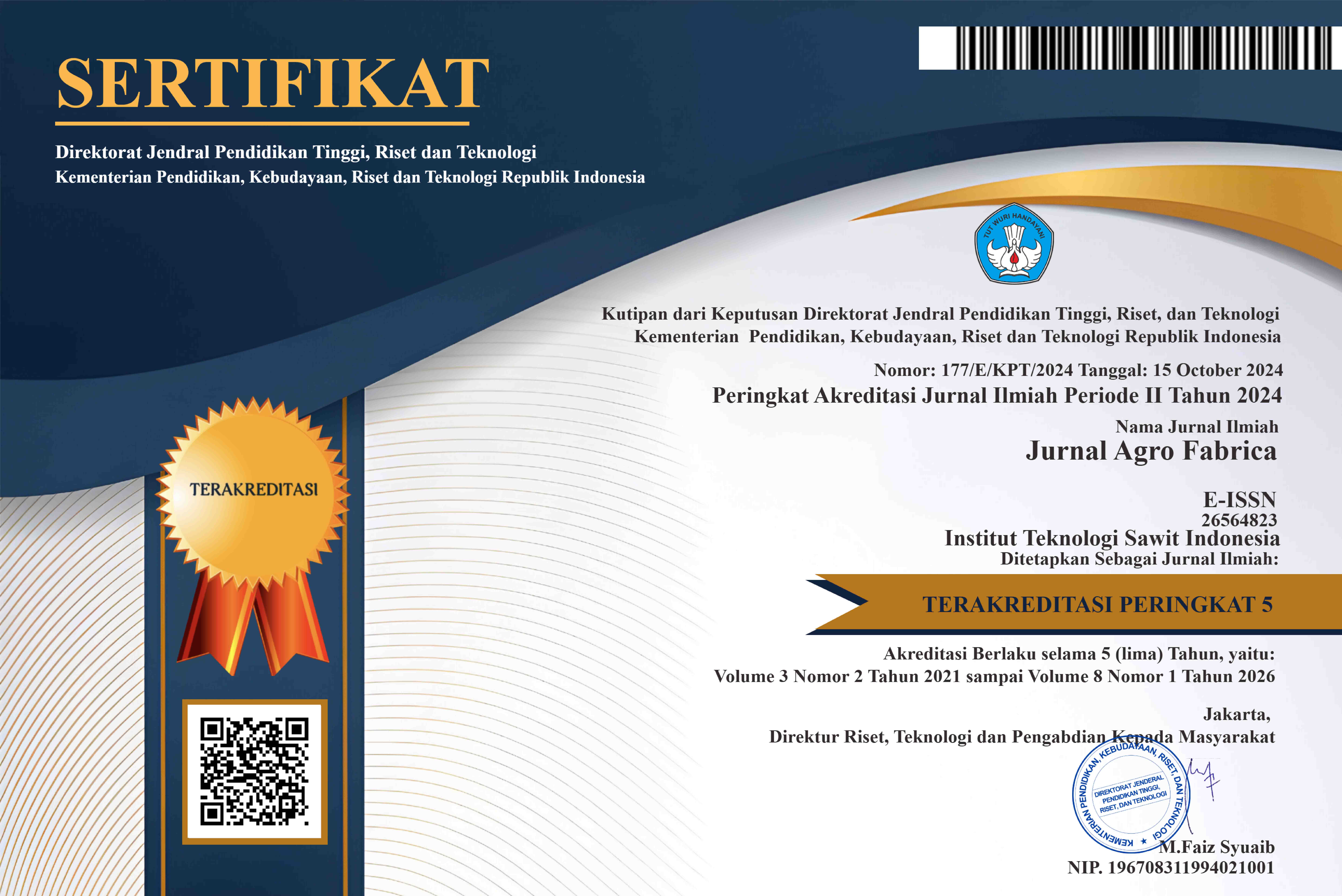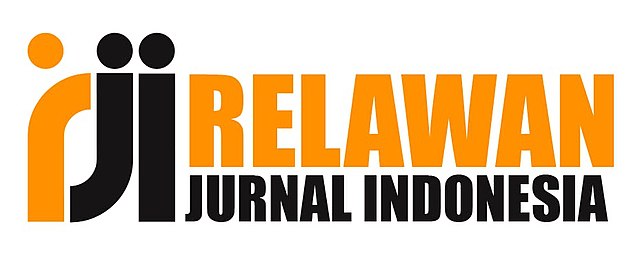PEMBUATAN BIOBRIKET ARANG BERBASIS TANDAN KOSOSNG KELAPA SAWIT DAN ECENG GONDOK SEBAGAI SUMBER ENERGI ALTERNATIF YANG RAMAH LINGKUNGAN
DOI:
https://doi.org/10.47199/jaf.v1i2.138Keywords:
oil palm empty bunch, water hyacinth, value heat, moisture content, ash contentAbstract
Growth population were very fast and caused demand to the energy increasingly while fuel ingredients fossil
thinning out. The needed of energy alternative sources as energy biomass among them briquettes charcoal. In
another, there are some potential biomass sources, one of that is empty bunch of oil pam. Briquettes charcoal
from oil palm empty bunch could be an alternative to resolve limitations source power energy and at once as
alternative. The material which used in this study were oil palm empty bunch and hyacinth mumps. Adhesives
are used is tapioca. The method used is press hydraulic with pressure Felts 0, 8 tons levels 10% adhesive.
Charcoal processing used a modified drum. Charcoal obtained then pounded and then made ingredients tray
briquettes charcoal. Briquettes charcoal made from 5 variations composition ingredients oil palm empty bunch
and water hyacinth were 100%, 75 %: 25%, 50%: 50%, 25%: 75% with adhesive concentration 10% with a
diameter of 2.15cm and 5.5 cm. The results of this study that best briquettes is TEG-1 treatment (100% bunches
blank with 10% adhesive produces) with value heat 5896 cal / g, water content 2.81%, content ash 20 %.
Downloads
References
Darmoko, dan P. Guritno. (1995). Pembuatan Briket dari Limbah Padat Kelapa Sawit. Laporan kegiatan Penelitian PPKS 1994/1995.
Dwiyati, dan Kholil. (2014). Pembuatan Briket Hasil Pemanfaatan Eceng Gondok dan Sampah Plastik HDPE Sebagai Energi Alternatif.
Hendra, dan Darmawan. (2000).Pengaruh Bahan Baku, Jenis Perekat, dan Tekan Kempa Terhadap Kualitas Briket Arang. Bogor: Pusat Penelitian dan Pengembangan Hasil Hutan.
Hutasoit, A. (2012). Briket Arang dari Pelepah Salak. Skripsi. Padang: Fakultas Teknologi Pertanian. Unniversitas Andalas.
Karim. (2014). Biobriket Eceng Gondok (Eichornia crassipes) Sebagai Bahan Energi Terbarukan.
Mardiansyah. (2015). Pembuatan Briket Arang Tandan Kosong Kelapa Sawit (TKKS) dan Cangkang Kelapa Sawit (CKS) dengan Penambahan Kotoran Sapi.
Masturin, A. (2002). Sifat Fisik dan Kimia Briket Arang dari Campuran Arang Limbah Gergajian Kayu. Skripsi. Fakultas Kehutanan. Institut Pertanian Bogor. Bogor.
Nurhayati, T. (1983). Sifat Arang, Briket Arang dan Alkohol yang Dibuat Limbah Industri Kayu. Laporan PPPHH/FPRDC Report No. 165 pp 27-33, Bogor.
Pari, G. DJ. Hendra, dan Hartoyo. (1990). Beberapa Sifat Fisis dan Kimia Briket Arang dari Limbah Arang Aktif. Jurnal Penelitian Hasil Hutan, VII (2) I: 61-67. Bogor.
Perry’s. “Chemical engineering Handbook 6th ed, Mc. Graw Hill Book Company Inc.
Santosa, dkk. (2010). Studi Variasi Komposisi Bahan Penyusun Briket dari Kotoran Sapi dan Limbah Pertanian. Jurusan teknik Pertanian: Fakultas Teknologi Pertanian. Skripsi. Padang.
Triono, A. (2006). Karakteristik Briket Arang dan Campuran Serbuk Gergajian kayu Afrika (Maesopsis emini Engl.) dan Sengon (Paraseriant falcataria L.). Skripsi. Bogor: Departemen Hasil Hutan. Fakultas Pertanian. Institut Pertanian Bogor.
Winayah, N.I. (2010). Co-Firing Fluized Bed Berbahan Batubara dan Ampas Tebu. Jurusan Teknik Mesin. Universitas Udayana Bali.
Downloads
Published
How to Cite
Issue
Section
License
Copyright (c) 2023 Jurnal Agro Fabrica

This work is licensed under a Creative Commons Attribution 4.0 International License.




















